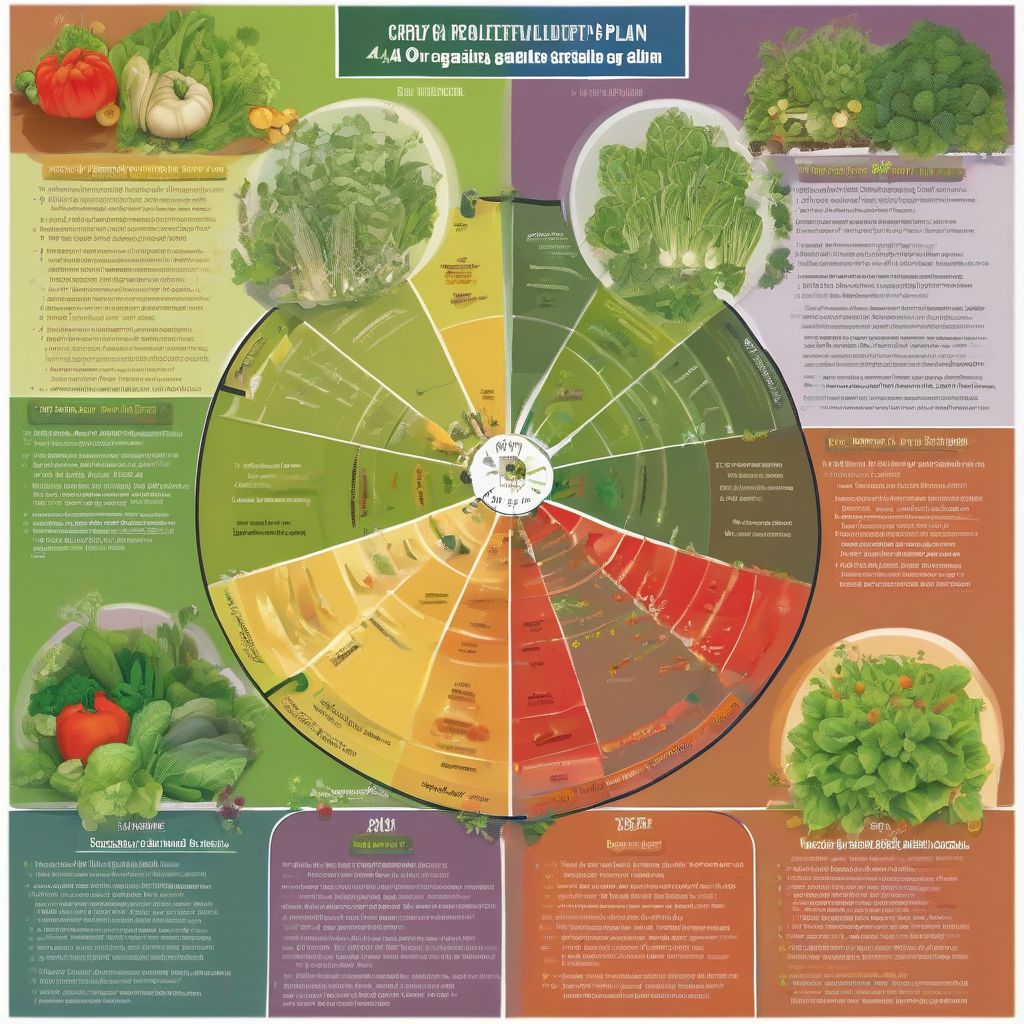Have you ever dreamt of harvesting baskets overflowing with vibrant, flavorful vegetables from your very own organic garden? It’s a dream shared by many, and achieving this bountiful reality hinges on understanding the essential principles of organic gardening. One such principle, often overlooked yet profoundly impactful, is crop rotation. Just like our bodies thrive on a diverse and balanced diet, our gardens flourish when we rotate crops, providing a varied menu for the soil and reaping a harvest of benefits in return.
Understanding the Magic of Crop Rotation
Crop rotation, simply put, is the practice of growing different types of plants in a specific, planned sequence on the same piece of land, season after season. It’s akin to a carefully choreographed dance where each plant plays a unique role in maintaining the soil’s fertility and health. This time-tested technique, far from being a new-age gardening fad, has been a cornerstone of sustainable agriculture for centuries.
Why is Crop Rotation Essential in Organic Gardening?
In the world of organic gardening, where synthetic fertilizers and pesticides are eschewed, crop rotation emerges as a hero, offering a natural and effective way to:
1. Disrupting Pest and Disease Cycles
Imagine this: you plant tomatoes in the same spot year after year. Sounds convenient, right? However, this practice creates a haven for soilborne pests and diseases specific to tomatoes, leading to potential infestations and reduced yields. Crop rotation acts as a natural disruptor, breaking these cycles by introducing different plants with varying vulnerabilities. By rotating crops, you’re essentially outsmarting pests and diseases, preventing them from gaining a foothold in your precious garden.
2. Enhancing Soil Fertility – A Feast for Your Plants
Different plants have different appetites and eating habits. Some are heavy feeders, drawing large amounts of specific nutrients from the soil, while others are nitrogen fixers, adding this vital nutrient back into the earth. Crop rotation ensures that your soil doesn’t become depleted of essential nutrients. By alternating between heavy feeders like tomatoes and nitrogen-fixing legumes like beans, you’re creating a balanced diet for your soil, promoting long-term fertility and healthy plant growth.
3. Improving Soil Structure – Building a Strong Foundation
Imagine the soil as a delicate sponge, its structure crucial for water retention, drainage, and aeration. Continuous planting of the same crop can lead to compaction, reducing the soil’s ability to hold water and air, essential for healthy root development. Crop rotation, particularly when it includes cover crops with deep roots, helps break up compacted soil, improving its structure and creating a more hospitable environment for your plants to thrive.
4. Boosting Biodiversity – Welcoming Beneficial Organisms
A thriving garden is a symphony of life, teeming with a diverse array of organisms both above and below the soil. Crop rotation contributes to this biodiversity by providing a variety of habitats and food sources for beneficial insects, earthworms, and microorganisms. These tiny creatures play a crucial role in nutrient cycling, pest control, and overall soil health.
 Crop Rotation Chart
Crop Rotation Chart
Planning Your Crop Rotation: A Step-by-Step Guide
Now that we understand the why, let’s delve into the how. Planning an effective crop rotation strategy doesn’t require a degree in botany but rather a basic understanding of plant families and their nutrient needs.
1. Know Your Plant Families
The key to successful crop rotation lies in understanding that plants within the same family often share similar pest and disease susceptibility and nutrient requirements. Therefore, it’s crucial to rotate between different plant families. For instance, planting tomatoes (nightshade family) after beans (legume family) is a smart move, while following tomatoes with peppers (also nightshade) is a recipe for potential problems.
2. Group Your Crops
Based on their nutrient needs, vegetables are broadly classified into:
- Heavy Feeders: Tomatoes, corn, squash, cabbage
- Medium Feeders: Lettuce, spinach, carrots
- Light Feeders: Beans, peas, radishes
3. The Four-Year Rotation Plan: A Classic Approach
A popular and effective crop rotation strategy is the four-year plan, dividing your garden into four sections and rotating crops as follows:
- Year 1: Heavy Feeders (Amend soil with compost or aged manure)
- Year 2: Legumes (Nitrogen-fixing)
- Year 3: Medium Feeders
- Year 4: Light Feeders (Include cover crops like buckwheat or clover)
This cyclical approach ensures that heavy feeders are always planted in a section replenished with nutrients, while legumes naturally add nitrogen back into the soil.
[amazon bestseller=”organic gardening for beginners”]
Reap the Rewards of Crop Rotation: A Bountiful Harvest Awaits
Embracing crop rotation in your organic garden is akin to investing in a long-term savings plan for your soil and your yields. By understanding the simple yet profound principles of this ancient practice, you’re not just growing vegetables, you’re cultivating a thriving ecosystem teeming with life, flavor, and abundance.
So, as you embark on your gardening journey, remember that a healthy garden begins with healthy soil, and crop rotation is the key to unlocking its full potential.
What are your experiences with crop rotation? Share your thoughts and tips in the comments below! Happy gardening!
